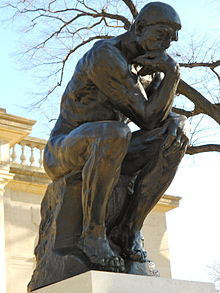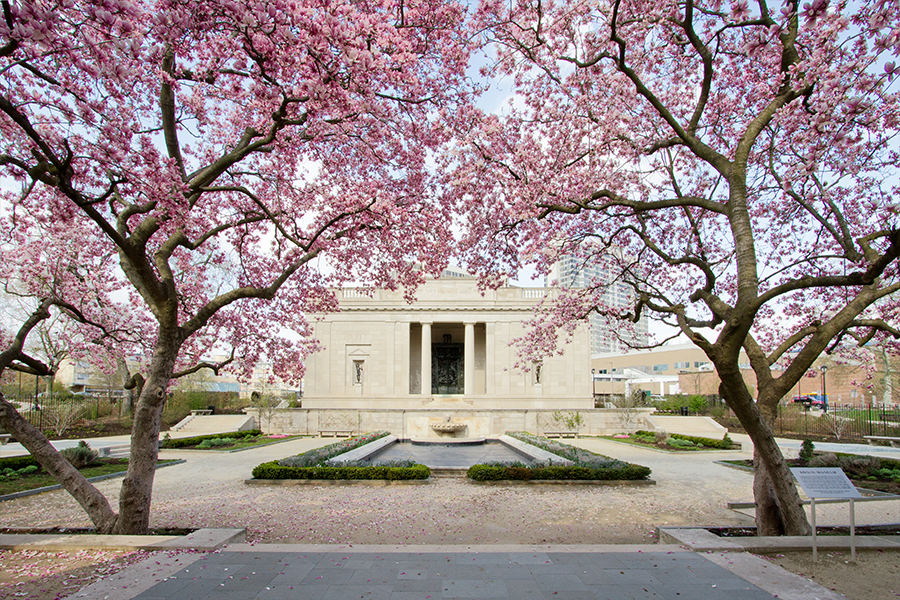Philadelphia’s Rodin Museum: What to Know Before You Go
The Rodin Museum in Philadelphia is a testament to the genius of Auguste Rodin, a master sculptor whose works have captured the imagination of art enthusiasts worldwide. Established in 1929 by Jules Mastbaum, a visionary with a profound appreciation for Rodin’s talent, this museum not only showcases an extensive collection of the artist’s works but also reflects a significant chapter in museum history, deeply intertwined with the cultural tapestry of Philadelphia.
As part of the Philadelphia Museum of Art, the Rodin Museum enhances the city’s exhibition space, promoting accessibility to the art of sculpture. Visitors can expect to navigate through an immersive journey, exploring iconic sculptures and exhibits that echo the artistic prowess of Rodin. This museum not only serves as a bridge connecting the past and present of sculptural art but also significantly contributes to Philadelphia’s reputation as a nurturing ground for artistic expression and appreciation.
The History of Rodin Museum
The Rodin Museum, affectionately known as “Paris on the Parkway,” was conceived and brought to life between 1927 and 1929, a period that marked the beginning of its journey as a pivotal cultural institution in Philadelphia. Jules Mastbaum, a movie-theater magnate with a deep passion for the works of Auguste Rodin, was the visionary behind its establishment. Mastbaum’s dedication saw him amass a collection of over 150 Rodin works from 1923 until his death, which he generously bequeathed to the city of Philadelphia. This collection, comprising bronzes, marbles, plasters, and more, laid the foundation for what would become the largest assembly of Rodin’s art outside France.
- Architectural Mastery: Designed by the French architects Paul Cret and Jacques Gréber, the museum’s structure is a testament to classical elegance. Its design, alongside the meticulously planned gardens, was revived and enhanced in 2011, adhering to the original 1928 visions. This rejuvenation was part of a broader initiative led by OLIN in 2003 to revitalize the Benjamin Franklin Parkway area, embedding the museum further into the city’s cultural landscape.
- Restoration and Accessibility: In 2012, the Rodin Museum underwent a significant $9 million renovation, restoring it to its original glory as envisioned by Cret and Gréber. This restoration not only honored the museum’s historical essence but also aimed at improving accessibility for all visitors, ensuring that Rodin’s works could be experienced in the manner Mastbaum intended. Today, the museum’s collection is accessible online, showcasing its commitment to accessibility and engagement with a wider audience.
The museum’s integration with the Philadelphia Museum of Art since its inception has allowed for a seamless administration and enhancement of its collection, further solidifying its status as a cornerstone of Philadelphia’s art scene. The museum not only houses the first bronze cast of “The Gates of Hell” commissioned by Mastbaum but also serves as a venue for events, underlining its role as a dynamic cultural hub.
Iconic Sculptures and Exhibits

At the heart of Philadelphia’s Rodin Museum lies an unparalleled collection that stands as a tribute to the artistic journey of Auguste Rodin, offering visitors a comprehensive glimpse into the sculptor’s prolific career. The museum boasts over 200 sculptures, including several marbles and plasters, alongside an extensive array of over 600 drawings. This diverse collection spans from Rodin’s early days at a porcelain factory in Sevres to his final years in Meudon.
Key Highlights of the Collection:
- Iconic Sculptures: Visitors are greeted by Rodin’s The Thinker at the museum’s entrance, setting the stage for an immersive experience. The museum is home to some of Rodin’s most celebrated works, including The Gates of Hell, The Burghers of Calais, and The Kiss.
- Diverse Mediums: The collection showcases Rodin’s versatility, featuring over 80 bronze sculptures, rare wax studies, and marbles like Young Mother in a Grotto.
- Special Exhibitions: The museum periodically reinterprets its collection, with current highlights including “Rodin’s Hands,” showcasing 15 hand-related sculptures, and “Rethinking the Modern Monument,” offering a fresh perspective on public monuments.
The Rodin Museum in Philadelphia not only houses the largest collection of Rodin’s works outside Paris but also serves as a dynamic platform for exploring the evolution of sculpture. Through its carefully curated exhibitions and the thematic diversity of its collection, the museum provides a unique lens through which to appreciate Rodin’s enduring legacy.
Architecture and Design
Designed by Paul Cret and Jacques Gréber, the Rodin Museum is a masterpiece of Beaux-Arts architecture, seamlessly integrating art with the natural beauty of its surroundings. This architectural style, characterized by its grandeur and ornate detailing, is evident in the museum’s elegant facade and the harmonious relationship between the building and the garden. The museum’s design encourages visitors to experience Rodin’s sculptures in a setting that blurs the lines between indoor galleries and outdoor spaces.
- Garden and Reflecting Pool:
- The courtyard features a symmetrical, rectangular reflecting pool and wall fountain.
- Pathways wrap around the pool, with planting beds along the perimeter, inviting visitors to explore the space.
- Four-Year Renovation Highlights:
- Restoration of sculptures, galleries, and grounds to their original design.
- Upgrades to paint and plaster finishes, marble restoration, and modernization of mechanical, electrical, security, and lighting systems by LF Driscoll.
The Beaux-Arts–style building and garden on Philadelphia’s Benjamin Franklin Parkway offer an engaging experience, transforming the museum into a tranquil urban oasis. This design philosophy ensures that visitors can enjoy Rodin’s sculptures in an environment that reflects the elegance and timelessness of the artworks themselves.
Visiting the Museum

When planning a visit to the Rodin Museum, located at 2151 Benjamin Franklin Parkway, Philadelphia, PA, there are several key points to keep in mind to ensure a seamless and enjoyable experience:
- Hours of Operation:
- Open: Monday, Friday, Saturday, and Sunday from 10:00 a.m. to 5:00 p.m.
- Closed: Tuesday, Wednesday, Thursday, July 4, Thanksgiving, Christmas.
- Admission Details:
- General Admission: Pay What You Wish; suggested amounts vary.
- Special Offers: Two-day ticket available for $30, granting access to both the Rodin Museum and the Philadelphia Museum of Art.
- Accessibility and Services:
- Parking: Limited metered spots available; garage parking at the Philadelphia Museum of Art.
- Accessibility: Wheelchair accessible with free wheelchair loans. Barrier-free entrance and accessible restrooms provided.
- Additional Services: Free Wi-Fi, baby changing stations, and manual wheelchairs available. Photography permitted in permanent collection galleries without flash.
For a more detailed exploration, visitors can enjoy daily tours offered free after admission, providing deeper insights into Rodin’s work. The museum also caters to families with young children, allowing strollers in most areas and offering a free family guide. Visit the museum’s website here.
The Museum’s Impact on Philadelphia’s Art Scene
The Rodin Museum, under the administration of the Philadelphia Museum of Art, stands as a beacon of cultural and artistic excellence in Philadelphia. Its role in the city’s art scene is both profound and multifaceted, contributing significantly to Philadelphia’s reputation as a center for the arts. Housing one of the most extensive public collections of Auguste Rodin’s work outside Paris, the museum not only attracts art lovers from around the globe but also serves as an educational resource for local communities, fostering a deeper appreciation for sculpture and the arts.
- Cultural Icon and Educational Resource:
- Houses an extensive collection of Rodin’s work, making it a key cultural attraction.
- Offers educational programs and resources, enhancing the public’s understanding of art.
As one of Philadelphia’s most visited cultural sites, the Rodin Museum plays a pivotal role in the city’s commitment to the arts. It’s not just a museum; it’s a place where art is actively preserved, interpreted, and discussed. The staff’s readiness to engage with visitors encourages a dynamic interaction with the art, enriching the visitor experience and promoting a deeper understanding of Rodin’s work.
- Visitor Engagement:
- Staff available for discussions and questions, enriching the visitor experience.
- Encourages active interpretation of Rodin’s art, fostering a participatory culture.
Located in the heart of the Benjamin Franklin Parkway/Logan Square and classified under Museums & Attractions, Arts & Galleries, the Rodin Museum is more than just a repository of art; it’s a vibrant part of Philadelphia’s urban landscape. Its presence in this iconic area underscores the city’s dedication to creating accessible and engaging cultural spaces for both residents and tourists alike.
- Urban Cultural Hub:
- Situated in a key Philadelphia neighborhood, enhancing the city’s cultural landscape.
- Acts as a bridge between the community and the arts, promoting accessibility and engagement.
The Rodin Museum, a cornerstone of Philadelphia’s vibrant art scene, encapsulates the enduring legacy of Auguste Rodin, offering an immersive portal into the sculptor’s profound artistic journey. Visitors to the museum embark on a comprehensive exploration of Rodin’s works, from the iconic The Thinker to the evocative Gates of Hell, within an architectural setting that itself mirrors the timeless beauty and grandeur of the sculptures it houses. Furthermore, the museum’s role extends beyond showcasing art; it acts as a dynamic cultural hub that fosters a deeper appreciation for the sculptural arts among both locals and visitors, enriching Philadelphia’s cultural tapestry.
Indeed, the Rodin Museum not only stands as a testament to Rodin’s genius but also underscores the significance of nurturing public spaces that celebrate artistic endeavors. With its extensive collection, educational initiatives, and commitment to accessibility, the museum exemplifies the power of art to connect, inspire, and educate communities. As we reflect on the museum’s impact, it becomes clear that it serves not only as a guardian of Rodin’s legacy but also as a beacon of art’s transformative potential, inviting us all to engage with and reflect upon the universal themes embodied in Rodin’s work.
FAQs
How long should I plan to spend at the Rodin Museum? The Rodin Museum is a tranquil spot ideal for a short and engaging art experience. You can expect to spend about an hour exploring its treasures.
What is the typical duration of a visit to the Rodin Museum in Philadelphia? A thorough visit to the Rodin Museum in Philadelphia, where you can admire a wide array of Rodin’s masterpieces, typically takes less than an hour.
Is it worthwhile to visit the Rodin Museum? Absolutely, the Rodin Museum is a must-see destination. It’s a charming museum dedicated to the works of sculptor Rodin, featuring not only his famous sculptures but also works by Camille Claudel and some of the most renowned impressionists. The museum also boasts an impressive garden adorned with sculptures and offers a pleasant spot to enjoy a good cup of coffee.
